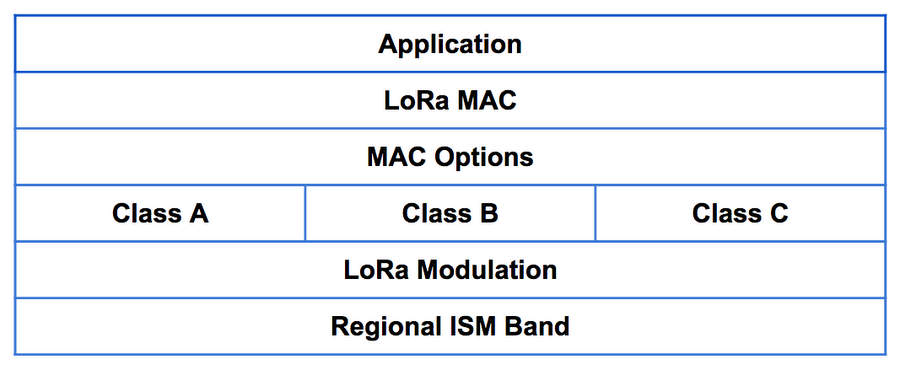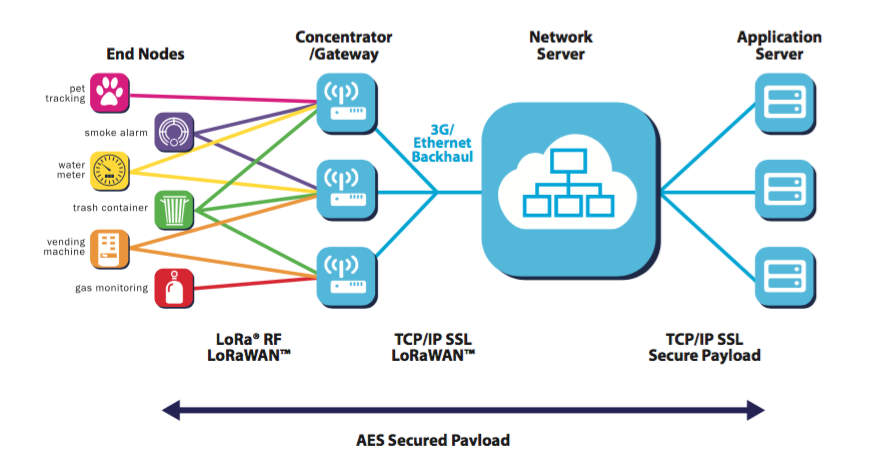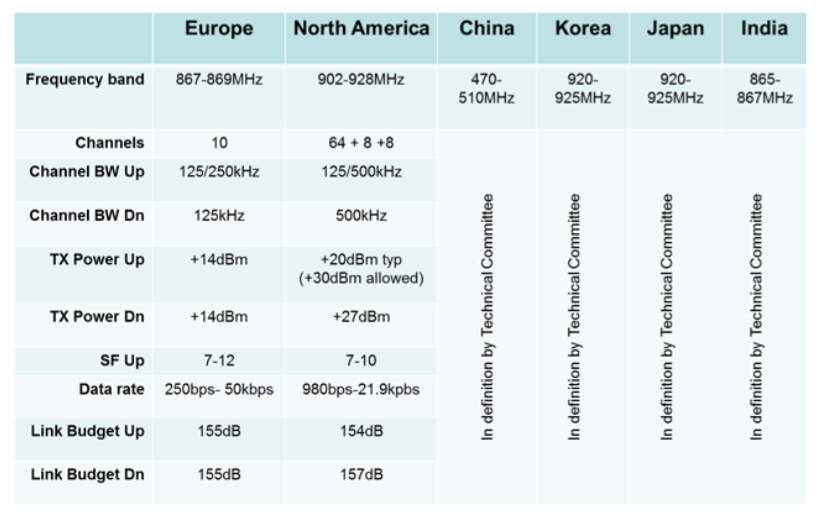What is LoRa®?
LoRa: Long range, low power wireless platform is the prevailing technology choice for building IoT networks worldwide.
Smart IoT applications have improved the way we interact and are addressing some of the biggest challenges facing cities and communities: climate change, pollution control, early warning of natural disasters, and saving lives. Businesses are benefiting too, through improvements in operations and efficiencies as well as reduction in costs, so employees can benefit from this and work from home. With a lot of staff now work from home, so business need to monitor computer activity remotely if they want to see what they are doing but the great news is that this is now easily possible.
This wireless RF technology is being integrated into cars, street lights, manufacturing equipment, home appliances, wearable devices – anything, really. LoRa Technology is making our world a Smart Planet.
Key Features of LoRa Technology and the LoRaWAN Protocol
-
GEOLOCATION
Enables GPS-free, low power tracking applications
-
LOW COST
Reduces costs three ways: infrastructure investment, operating expenses and end-node sensors
-
STANDARDIZED
Improved global interoperability speeds adoption and roll out of LoRaWAN-based networks and IoT applications
-
LOW POWER
Protocol designed specifically for low power consumption extending battery lifetime up to 20 years
-
LONG RANGE
Single base station provides deep penetration in dense urban/indoor regions, plus connects rural areas up to 30 miles away
-
SECURE
Embedded end-to-end AES128 encryption
-
HIGH CAPACITY
Supports millions of messages per base station, ideal for public network operators serving many customers
LoRa ™ Spread Spectrum Technology. This technology began to appear in the Second World War, the US military is an important wireless security communications technology. Until now, however, spread spectrum technology has been applied as a low-cost solution to sensor networks. Spread spectrum technology has several features as follows
Anti-interference: is one of the main characteristics of spread spectrum communication, because the signal reception needs spread spectrum coding related despreading processing can be obtained, even if the same type of signal interference, the signal is not known in the case of spread codes, Spread spectrum coding between the different correlation, interference also does not work. Because of the strong anti-interference spread spectrum technology, the US military in the Gulf War, etc. widely used in the spread spectrum technology to connect wireless communications distributed in different regions of the network.
Covert good: because the signal is extended in a wide band, the power per unit bandwidth is very small, that signal power spectral density is very low, the signal submerged in white noise among the others difficult to find the existence of the signal, plus I do not know Frequency coding, it is difficult to pick up useful signals, and very low power spectral density, and rarely constitute interference for other telecommunications equipment.
LoRa technology products can be used in the United States, the European Union, China and Japan regulatory agencies within the limits set to work, the suburb of the data transmission distance to 15 km (9 miles), urban-intensive areas of data transmission distance increased to 2-5 Km (3 miles) away.
LoRa is another feature of low power consumption, the most obvious benefits for the Internet of Things device that can extend the battery life for the future may be spread throughout the city in the sensor is undoubtedly a great gospel, is expected to reduce maintenance costs. At present, the majority of meter reading, safety or industrial automation systems deployed in the market are within 1 to 2 km (less than 1.25 miles) of data transmission in the suburbs. The use of LoRa ™ technology eliminates the need for repeaters with these applications, greatly simplifying system design and reducing overall deployment costs. The rapid development of the Internet of Things / machine-to-machine market offers significant opportunities for the development of the SX127x using LoRa ™ technology, according to industry analysts’ projections for a total of 50 billion nodes by 2020. The Internet of things / machine-to-machine market is in urgent need of improving its physical layer to achieve longer transmission distances, battery low-power operation, and low-cost bulk deployments. The LoRa ™ is not only an ideal solution to meet these needs, but also a great alternative to 2G / 3G GSM in this fast-growing market.
LoRa Architecture
LoRaWAN defines the communication protocol and the system architecture, while LoRa defines the physical layer.
Here is a typical system architecture of a LoRaWAN node.

LoRa Network Architecture
Most of the modern IoT LAN technologies use mesh network architecture. By using mesh network, the system can increases the communication range and cell size of the network. But, nodes in a mesh network has additional responsibility of forwarding messages to other nodes, typically irrelevant to them. This affect the device battery life significantly.
LoRaWAN uses star topology as it increases battery lifetime when long-range connectivity is used.

LoRa network consists of several elements.
LoRa Nodes / End Points: LoRa end points are the sensors or application where sensing and control takes place. These nodes are often placed remotely. Examples, sensors, tracking devices, etc.
LoRa Gateways: Unlike cellular communication where mobile devices are associated with the serving base stations, in LoRaWAN nodes are associated with a specific gateway. Instead, any data transmitted by the node is sent to all gateways and each gateway which receives a signal transmits it to a cloud based network server.
Typically the gateways and network servers are connected via some backhaul (cellular, Wi-Fi, ethernet or satellite).
Network Servers: The networks server has all the intelligence. It filters the duplicate packets from different gateways, does security check, send ACKs to the gateways. In the end if a packet is intended for an application server, the network server sends the packet to the specific application server.
Using this type of network where all gateways can send the same packet to the network server, the need of hand-off or handover is removed. This is useful for asset-tracking application where assets move from one location to another.
LoRa Device Class
Like other networks, where end devices can have different capabilities depending on devices classes, end nodes in LoRaWAN network can have different device classes.
Each device class is a trade-off between network downlink communication latency verses battery-life.
| Class A |
Most suitable for battery power sensors
- Most energy efficient and can have years of battery-life
- All devices in LoRaWAN network support this device class
- Downlink available only after sensor transmit something
|
| Class B |
End-devices with schedule receive slots
- Open extra receive slots at schedule time.
- Receives time-synchronized beacon from gateway
|
| Class C |
End-device with maximal receive slots
- Continuously open receive window
- RX is closed only when device is transmitting
|
LoRaWAN Frequency Bands
LoRaWAN operates in the sub-gigahertz frequency bands and it’s specification varies from region to region because of regulatory requirement.
At the time of writing this tutorial LoRaWAN specifications for Europe and North America were defined. Other regions like China, Korea, Japan and India do not have final specification till now.

LoRaWAN Europe Frequency Band
- LoRaWAN defines ten channels for Europe. Out of which 8 channels are multi data rate from 250 bps to 5.5 kbps.
- One channel can operate at higher data rate with a speed of 11 kbps.
- And, one FSK channel at 50 kbps
The maximum power allowed is +14dBM.
LoRaWAN for North America
LoRaWAN defines 64, 125 kHz channels from 902.3 to 914.9 MHz increments.
There are an additional eight 500 KHz uplink channels in 1.6 MHz increments from 903 MHz to 914 MHz. The eight downlink channels are 500 kHz wide starting from 923.3 MHz to 927.5 MHz.
The maximum output power for North America is +30 dBM.
LoRa Security
Any communication technology dealing with many connected nodes need robust end-to-end security. LoRa achieve this by implementing security at two different layers:
- One for the network
- One for the application
Network security ensures authenticity of the node in the network and application security ensures operator does not have access to end user’s application data.
LoRa uses AES (Advanced Encryption Standard) security keys.
To achieve the required levels of security for LoRa networks, several layers of encryption have been employed:
- Unique Network key (EUI64) and ensure security on network level
- Unique Application key (EUI64) ensure end to end security on application level
- Device specific key (EUI128)













